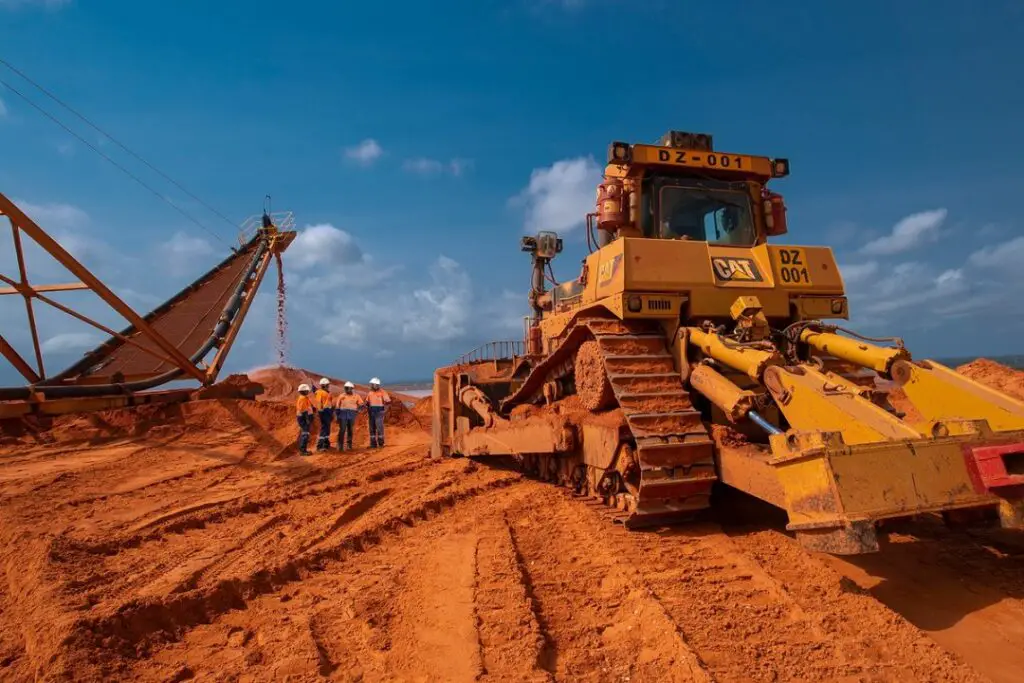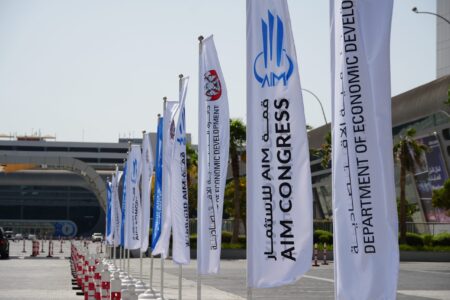- Last year, the mining sector suffered 6.5% contraction, attributable to a dip in production of titanium and soda ash minerals.
- Overall, Kenya’s total earnings from minerals dropped by 4.3% to $261.7 million in 2023.
- A further dip could be in the offing as Base Titanium, which accounts for 65% of total mineral exports, is set to cease mining operations December.
The challenges gripping Kenya’s mining sector are set to worsen this December when Base Titanium, arguably the biggest miner in the country closes shop following the depletion of minerals at its focus area, Kwale County. Base Titanium’s closure is expected to an abrupt end to the export of rare earth minerals of Ilmenite, Rutile, and Zircon.
According to the miner, which has been undertaking exploration activities in the region, there will be no major investments in the near future since results have shown lack of enough deposits to support commercial activities.
“Unfortunately, after exploring all avenues to further extend mine life, mining at Kwale operations will end in December 2024 when ore reserves are fully depleted as planned. Planning for closure and the transition to post-mining land use is well advanced, with the clear objective of cementing a reputation for excellence in the full life cycle of mining,” Managing Director of Base Resources, Tim Carstens, said in a statement.
In the financial year ended June 2024, the miner’s sales revenue decreased by 50 per cent to $135.1 million compared to $271.4 million reported in the previous period. This came as lower production limited sales volumes with a total of 200,530 tonnes sold in the reporting period, compared to 406,023 tonnes in the comparable year ended June 2023.
Base Titanium reported earnings before interest, taxes, depreciation, and amortization (EBITDA) of $26.4 million and underlying net loss after tax of $1.6 million. Base Titanium general manager External Affairs, Simon Wall, has since confirmed that the firm has started the process of laying off staff ahead of the December closure of operations in Kwale County, in a process that will cost about $7.7 million.
Base Titanium planned closure
With the planned closure, it is expected the Kenyan mining industry will sustain a gut punch as Base Titanium has been the top exporter of minerals in the country, where resource hungry China has been the primary market.
The company is, however, hopeful of carrying out exploration activities in other parts of the coast region with potential future investments. It has applied for eight prospecting licenses. However, this could take up to 10 years between explorations, and actual investments, according to management, meaning Kenya will not benefit from titanium mineral exports in the medium-term.
In the financial year ended June, the company paid the Kenyan government $6.77 million, a 54 per cent drop compared to the $14.6 million paid in a similar period last year.
Kenya’s mineral wealth
Kenya is endowed with minerals such as rare earth (titanium), coltan, nickel, radioactive, niobium, copper, lithium, and soda ash. Other minerals with proven reserves in various parts of the country are fluorspar, gold, coal, manganese, iron ore, gypsum, diatomite, chromite, limestone, and silica sand.
The country is, however, yet to fully maximise its full potential in mining. This is owing to a number of factors which according to experts, include inadequate expertise, under development of the mineral processing industry, lack of appropriate technology and high energy costs, which contribute to the low level of value addition to Kenya’s minerals.
The sector is also yet to formulate strategies for marketing, promotion and value addition to minerals, hence most of them are exported in raw form, meaning that the country is not fully benefiting from its mineral wealth. This challenge is compounded by limited initiatives in the areas of branding, promotion and marketing of Kenya locally, regionally and internationally as a preferred mining destination.
There has also been growing influence of foreign entities in established artisanal mining zones. Poor oversight and insufficient enforcement of regulations have enabled undocumented foreign traders and miners to infiltrate these areas.
Last year, the mining and quarrying sector recorded a 6.5 per cent contraction, largely attributable to a decline in production of most of the minerals such as titanium and soda ash.
According to the Economic Survey 2024 by the Kenya National Bureau of Statistics (KNBS), total earnings from mineral production declined by 4.3 per cent to $261.7 million (Ksh33.7 billion) in 2023 from from $273.4 million (Ksh35.2 billion) in 2022.
“This was partly attributable to a 36.5 per cent and 25.2 per cent decline in the quantity of titanium ores and concentrates and soda ash produced in 2023 respectively,” KNBS said in its report.
Consequently, the value of titanium ore minerals (Ilmenite, Rutile and Zircon) recorded a declined by 14.3 per cent from $219.8 million (Ksh28.3 billion) in 2022 to $187.9 million (Ksh24.2 billion) in 2023, while the value of soda ash decreased from $15.5 million (Ksh2 billion) to $13.2 million (Ksh1.7 billion).
Apart from titanium and soda ash, the contraction in mining and quarrying was reflected in decline in production of most minerals including gemstone, diatomite and gold, which is mainly done in small scale by artisanal miners.
Read also: How Shoddy Kenyan Businesses Exploit Legal Loopholes to Steal Billions From Mining
End of titanium mining
Australian mining company-Base Titanium, whose parent company–Base Resources has since been acquired by American mineral resources firm–Energy Fuels, has been the leading mineral exporter in the country since investing in Kenya more than 13 years ago. Energy fuels made a cash-and-stock deal valued at about $240 million in the buyout plan.
Base Titanium’s investment in Kenya begun in 2010 with a capital expenditure on its project to date being in excess of $380 million. The first shipment of minerals was made in February 2014 with the form over the years accounting for up to 65 per cent of Kenya’s mineral exports. However, it has announced it will stop mining activities in the Kenyan coastal region of Kwale following depletion of minerals, which
Read also: The future of Kenya’s mining industry
Licensing delays
Meanwhile, mining sector players are calling on President William Ruto to intervene and smooth out licenses issuance go enable investments in the industry. They have decried discrimination in the issuance of permits and an unfriendly regulatory framework, which is derailing investments in the multi-billion sector.
Despite the lifting of the moratorium on licensing, investors say they are facing challenges in getting the necessary approvals from the ministry. The Kenya Chamber of Mines (KCM) want the President to help address “bureaucracy” in the ministry, which is hurting both large scale players and artisanal miners across the country.
According to the chamber, which represents the interests of artisanal, small, medium and large miners, explorers, prospectors, dealers, processors, service providers and professionals in Kenya, the sector’s performance has been dropping on the back of reduced activities by investors.
Artisanal miners also lack a business friendly regulatory framework to operate, the lobby said. “Those entrusted to steward the sector to new heights seem to be oblivious to their mandate; the haphazard decision making has sunk the sector to levels never witnessed in the history of Kenya’s mining sector,” KCM chairman, Patrick Kanyoro, said in a memorandum to the President.
Processing of permits and licenses has also been slow, hence expensive for investors in the sector. “We are through with the first half of the year and applications for various categories of permits and licenses are still pending,” Kanyoro said.
Industry players also want the government to review minerals listed as strategic saying the move has out artisanal miners. Minerals declared as strategic include Cobalt, Copper, Lithium, Niobium, Coltan, Tantalum, Tin, Tsavorite, Nickel, Graphite, Chromite, Thorium and Uranium and other rare earths.
According to experts, the sector has potential to contribute between four per cent and 10 per cent to the country’s GDP if the right investment climate and regulations are put in place, compared to the current mare one per cent.
Read also: Recent policy shifts to remodel Kenya’s mining sector
Government commitment
The government is banking on policy reforms and the recent mapping of the country’s minerals to drive growth of the sector. According to the Mining, Blue Economy and Maritime Affairs Ministry, the mapping helped the country identify the different minerals and locations across the country, making it easier for investment decisions.
Kenya also has a Mining Act of 2016, which guides licensing and investments in the sector, with the ministry streamlining processes and marketing activities to attract investors. The development of the policy was done in a consultative manner as required by the Constitution, involving all stakeholders right from the grass roots level.
It also benefitted from inputs of key players, including the Kenya Chamber of Mines, mining companies, academic and research institutions, government ministries and departments, Parliament, development partners, civil society, mining communities and the general public.
Newly appointed Mining Cabinet Secretary Hassan Ali Joho has committed to reform the sector. The minister is eyeing radical steps aimed at streamlining internal and external factors and optimising mineral investments’ potential for increased revenue generation.
“Mining is a bedrock for Kenya’s economic growth. If well managed, this resource can settle our debt and yield revenues to spur national development,” Joho said recently. Joho has adopted a multi-pronged approach, touching on boosting revenue collection as he moves to declare war on illegal mining and smuggling of minerals.
“Smuggling of our minerals is an economic crime. We will have mining officers within the border points to stop this illicit trade,” Joho said during a recent tour of the Western-Nyanza region which is home to gold mining activities. He also warned miners taking too long to explore without making any progress that their licenses will be revoked.
Read also: Mining in Africa: Leveraging Sustainability in the African Mining Sector










